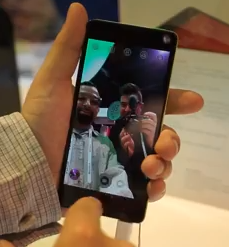
CES 2014: We go hands-on with the ZTE Nubia 5S and 5S Mini [VIDEO]
We ran into a couple of ZTE’s newest entrants in the Nubia line-up, with the recently revealed Nubia 5S and Nubia 5S Mini catching our attention quite handily. ZTE hasn’t always had the best reputation for quality smartphones, but they’re banking on these little guys (as well as a couple of other devices) to change all that.
ZTE Nubia 5S
Starting with the Nubia 5S, this upgrade brings us a slightly refreshed set of specs, the most notable of which being Qualcomm’s Snapdragon 800 processor sitting inside. It also has a pretty crisp 5-inch 1080p HD display for those who were wondering if ZTE would skimp on display quality for this one. Here’s a quick look at the full spec list:
- Snapdragon 800
- 2GB RAM
- 13 megapixel rear camera with 4K video
- 5 megapixel front camera
- microSD cards up to 64GB
- 2,300mAh battery
- NFC
- Android 4.2 Jelly Bean
We’re a little disappointed to see this thing still running on Android 4.2 Jelly Bean, but this should be one of ZTE’s top priorities when it comes to software upgrades down the line. Everything else looks quite good, though, with an insane 13 megapixel camera that can shoot 4K video on the back. That sensor is accompanied by a 5 megapixel sensor on the front, which is something you just don’t see on many smartphones.
One thing that really caught our attention with the Nubia 5S is its design. It feels like ZTE finally caught a groove in terms of engineering, and found a way to eliminate those ugly bezels for a more sleek look and feel. That’ll go a long way to presenting itself to potential smartphone shoppers looking for something different.
Nubia 5S Mini
What caught our eye even more effectively was the Nubia 5S Mini. I don’t know about you guys, but I’m having a hard time calling any phone over 4.3 inches “mini” in this day and age. We suppose it’s sensible, though, considering it is technically smaller than the aforementioned 5S. Here’s how it reads out in comparison:
- 4.7-inch 720p display
- Snapdragon 600
- 2GB of RAM
- 16GB of storage
- 13 megapixel rear camera
- 5 megapixel front camera
- 2,000mAh battery
- microSD card support
- Android 4.2 Jelly Bean
That isn’t bad for a small phone, though. The negative connotation that usually goes with the term “mini” is starting to fade with each passing year, even though this particular phone is as big as some of 2013’s flagship devices.
Nubia 5S and 5S Mini Software
Both these things run Android 4.2, though not without ZTE’s own custom UI tweaks running beside it. ZTE has put a heavy emphasis on customization and themeing, allowing folks to change the look and feel of the device to their taste. ZTE also surprises us with a pretty robust suite of camera features, even if the software was acting a bit wonky in our quick testing.
Both of these devices are headed for the Chinese market soon, but we wouldn’t hold our breath to see it go much further than that. You can find our hands-on video above, so take a look if you want to get more up-close and personal with them.